
They Rest Facing the Sun
This is the story of a cemetery at Harbour Main that dates back to 1776, and the active efforts of one man to restore and reclaim something historic as a legacy to his community.
This is the story of a cemetery at Harbour Main that dates back to 1776, and the active efforts of one man to restore and reclaim something historic as a legacy to his community.
Text and Photography
By:
Füsun Atalay ~ Copyright © 2003
Visiting a cemetery to see the grave stones of one’s ancestors and reading the names, dates and relationships inscribed on their head stones can be a humbling experience, especially when one can trace the family back over two centuries. But occasionally time, and particularly neglect can rob people of such contemplative experiences.
This is the story of a cemetery at Harbour Main that dates back to 1776, and the active efforts of one man to restore and reclaim something historic as a legacy to his community. Known as the Irish Cemetery this was the burial ground for people from the communities of Holyrood, Salmon Cove (Avondale), Cat’s Cove (Conception Harbour), Harbour Main and Chapel’s Cove.
Until ten years ago, when Richard Kennedy took it upon himself to restore the graveyard, stones marking names such as Woodford, Ezekiel, Kennedy, Costigan, Luce, Furey and Doyle were camouflaged by nature’s wild growth. "When I started this, you couldn’t get through here," he says. "The trees were right over my head, you couldn’t see anything."
Ever since he was a child, Kennedy had known about the cemetery which pre-dates any parish in the town by about 25 years . What he couldn’t understand though was why nobody had paid any attention to it in the past century. The site had been so badly neglected that trees and wild brush growing to a height of up to two metres had taken over the area, covering up any signs that the ancestors of many residents in the community were buried there.
He is reluctant to point to the Kennedy plot, lest there be a misunderstanding about his motives in restoring the cemetery. "I didn’t do it for this," he emphasizes. "I didn’t even know this was the original family until I found Johnny the Blunt’s will. And then I realized this is Johnny the Blunt, my great -grandfather."
In a certain light on a sunny morning, the inscriptions can be seen very clearly. "Here lies the body of James Kennedy who departed this life in 1776, aged 60 years". Although the grave of James (his great-great-great grandfather) is the first one known of his ancestors, Kennedy has no idea where the former was born. Next to the headstone of James are those of his two sons, John and Patrick. Patrick’s son, Johnny the Blunt, was Richard’s great-grandfather. In those days, many people had nicknames based on a quality of character or appearance to distinguish them from one another.
Close by is the Woodford family plot where, next to that of William Woodford’s, one can see the unusual two piece headstone of James Woodford who was buried in 1853. The Woodfords, like the Kennedys, were among the earliest residents of the area.
"Everywhere you see a stone is a burial place," points Kennedy. " When I put up the large (wooden) cross this year (at the entrance) by the picket fence, we brought up a beautiful tibia and fibula. I was amazed at how well it was preserved- you know, really, almost as good as the ones they gave us to study in the first year of medicine."
A retired pediatric surgeon in his eighties, Kennedy was the right person to come upon such a find. He adds that they tried to pick an area where he hoped that they wouldn’t strike anything, but unfortunately they did. This may well indicate the presence of some remains whose markers are no longer in existence.
The majority of the headstones at the cemetery are not ornate or expensive because "many of the people were so poor at that time that they couldn’t afford anything else," says Kennedy. Often the burial spots were simply marked with a rock. Frequently the markers are Newfoundland slate on which the names are chiselled.
On some of the Victorian stones such as the O’Keefe stone, the name of the stone carver is also visible, perpetuating not only the memory of the early inhabitants of the Catholic communities at the head of Conception Bay, but also constituting a source of great interest to scholars studying the history of stone carvers of the nineteenth century.
Dr. Cyril Burne, Chair of Irish Studies program at St. Mary’s University in Halifax, is one such scholar. He has ancestors who hail from Holyrood and Conception Harbour. Over a decade ago he photographed the then-visible stones and transcribed the words on them in the context of a larger project in Harbour Main. Unfortunately those names and dates are now lost to erosion.
The first uncovered headstone, judging by its quality and the design carved on it, may have come from Ireland. It is inscribed with the name of Costigan, a native of Kilcash of County Tipperary, Ireland who was buried in 1844 at age 54. The names of his daughters, Johanna who died at age 25, and Mary Ann who died at 22, appear on the same stone.
More of the remaining inscriptions can be read on a sunny day because the stones all face the east. Letters or dates which couldn’t be seen before stand out in clear relief when the angle of the light is right. For example, the previously unreadable inscription on one of the stones: " Here lieth the body of Matthew Hawco, died 7th of August 1813 age 15 years " is clearly legible in the mid-morning sun. "A lot of people died very young then," remarks Kennedy. "Living was anything but easy in those times".
"I’m sure there are inscriptions on all of them, but you can’t read some of them anymore. See, this is local rock," he indicates a brittle slate with the tip of his walking cane. The stones are flaking or breaking away; and the inscriptions are getting lost as a result. Kennedy wants to maintain what can be preserved so that local residents who have been searching for information about their ancestors can come to the graveyard and find out more. But keeping old headstones and grave markers in any kind of decent condition seems to be an uphill battle in the sometimes harsh Newfoundland climate.
Another stone, dated 1797 and the only one inscribed in French, is also very clear on this day due to the position of the sun. Kennedy is happy that the inscription which was invisible on previous occasions is clearly legible on this particular day. "This is an interesting stone- Lacour is a family name here," he says. " They’re supposed to have come from (the island of) Jersey, as many fisherman did centuries ago. The thing that’s fascinating to us is that whoever ‘Lecor de SBS’ was, we don’t have a clue what SBS means."
The inscription is puzzling. The first two lines read: ISI LECOR DE SBS / SE REPOS 1797. (Here lies Lecor of SBS 1797). The spelling is phonetic: ISI, for example, is modern French "ici". If Kennedy is right, and Lecor is a phonetic spelling of Lacour, then SBS is likely an abbreviated place name in Jersey, or an acronym for a religious order event hough no one recognizes it as such. On the other hand, although less likely, "lecor" may also be a phonetic spelling for "le corps" (the body), in which case SBS may be the initials of the person buried there at age 23.
In either case the initials SBS remain a mystery: It is unlikely that someone would use only the initials of a person or a place if these could not readily be identified. The simple elegance of the carving on the plain stone, nevertheless, makes this one of the most beautiful ones in the cemetery.
Moving on, Kennedy points to the row of Ezekiel stones in progression dating back to 1725. Patrick Ezekiel was Jewish. "He first came to Harbour Grace in 1700 and later married a Catholic woman in Harbour Main. He is the ancestor of all the Ezekiels in Newfoundland today."
The largest is the Gushue family stone, bearing the names of John, his wife Rachel and their son John. The inscriptions reveal that John Gushue, who expired on July 2, 1814 at 69 years of age was a "generous friend and affectionate neighbour".
Below this inscription is the name of his "beloved wife Rachel Gushue who in her 56th year departed this life on 22 July, 1814". Son John’s inscription, "who in the gloom of his lingering disease expired at the age 11 on 15 April 1817," is inscribed below his mother’s name on the massive Gushue stone.
The major task of restoration started with cutting down all trees and wild shrubbery which had uprooted and displaced many of the headstones.
At first people in the community were slow to help, as nobody was even aware of the existence of a cemetery on the land. Once Kennedy started the work, however, many residents pitched in by painting fences and doing whatever they could. Following the advice of Wade Greeley at the Newfoundland Museum now Dr. Kennedy and his helpers are numbering the stones, using India ink and other approved materials.
One can see the labour of love that went into marking the burial lots with wooden crosses, and placing the overturned headstones back into their proper position in their right places. The greatest challenge ahead now lies of protecting the old headstones and the brittle slate grave markers from the ravages of time.
"The reason this was chosen as a cemetery site," says Kennedy, "is that this must have been the centre of the community in the 1700's, because Keating’s Stage, where Sunday Mass was held in 1775, is just up from the cemetery". Because saying mass was illegal at the time, the participants in the mass were punished and sent back to Ireland.
An ironic yet significant event that followed the recovery of this cemetery is the Mass that was held in late July for the first time in many decades on the grounds. Father Fred Terry, the celebrant of the Mass also has ancestors buried there. The event has brought forth stories about the ancestors of some Harbour Maine residents.
One of these was told by Hubert Furey who was in attendance. Hubert’s great-great-grandfather George Furey, who is buried in the cemetery, was shot and killed, and many others were wounded during an election riot in the area in 1861.
Unfortunately, many stones are eroding very badly and on the slate stones, the markings are flaking off. There is really no way of conserving them short of removing the stones from the graves and setting them in a stone wall with a protective covering, as was done in one historic cemetery in Nova Scotia. But such a concept defeats the idea of erecting a grave stone in memory of a departed one.
Richard Kennedy has completed his massive plan of restoring a piece of history to the community of Harbour Main. But time is the enemy. Unless serious and significant steps are taken soon, his efforts of the last six years will have been in vain.
Copyrighted Material. All Rights belong to Füsun Atalay Copyright © 2003
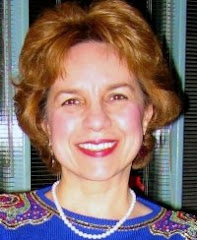







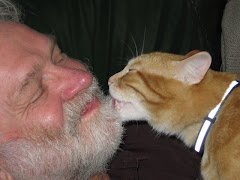





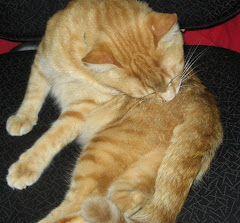





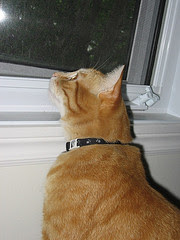


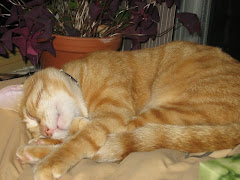


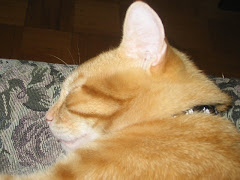



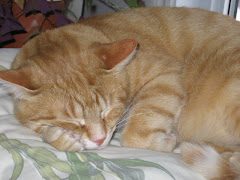


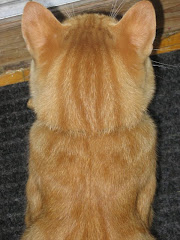
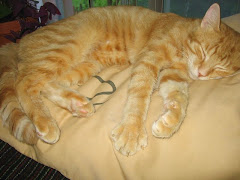
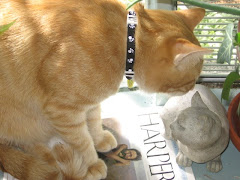




No comments:
Post a Comment